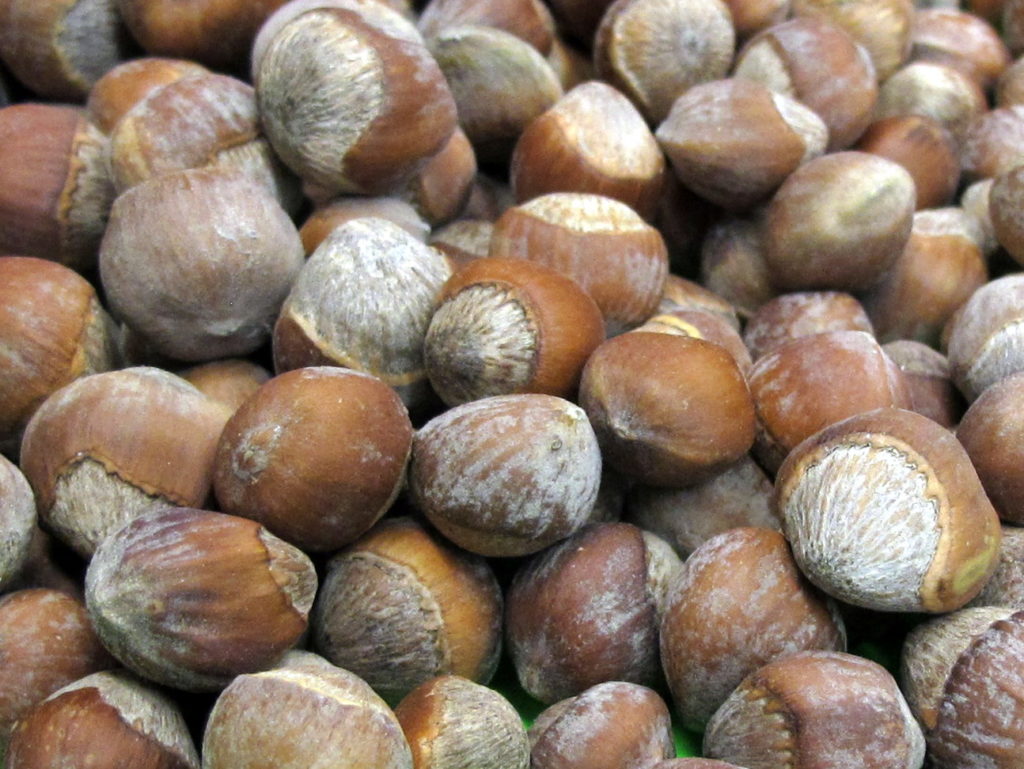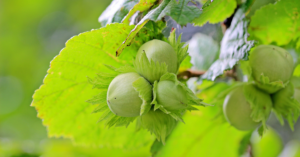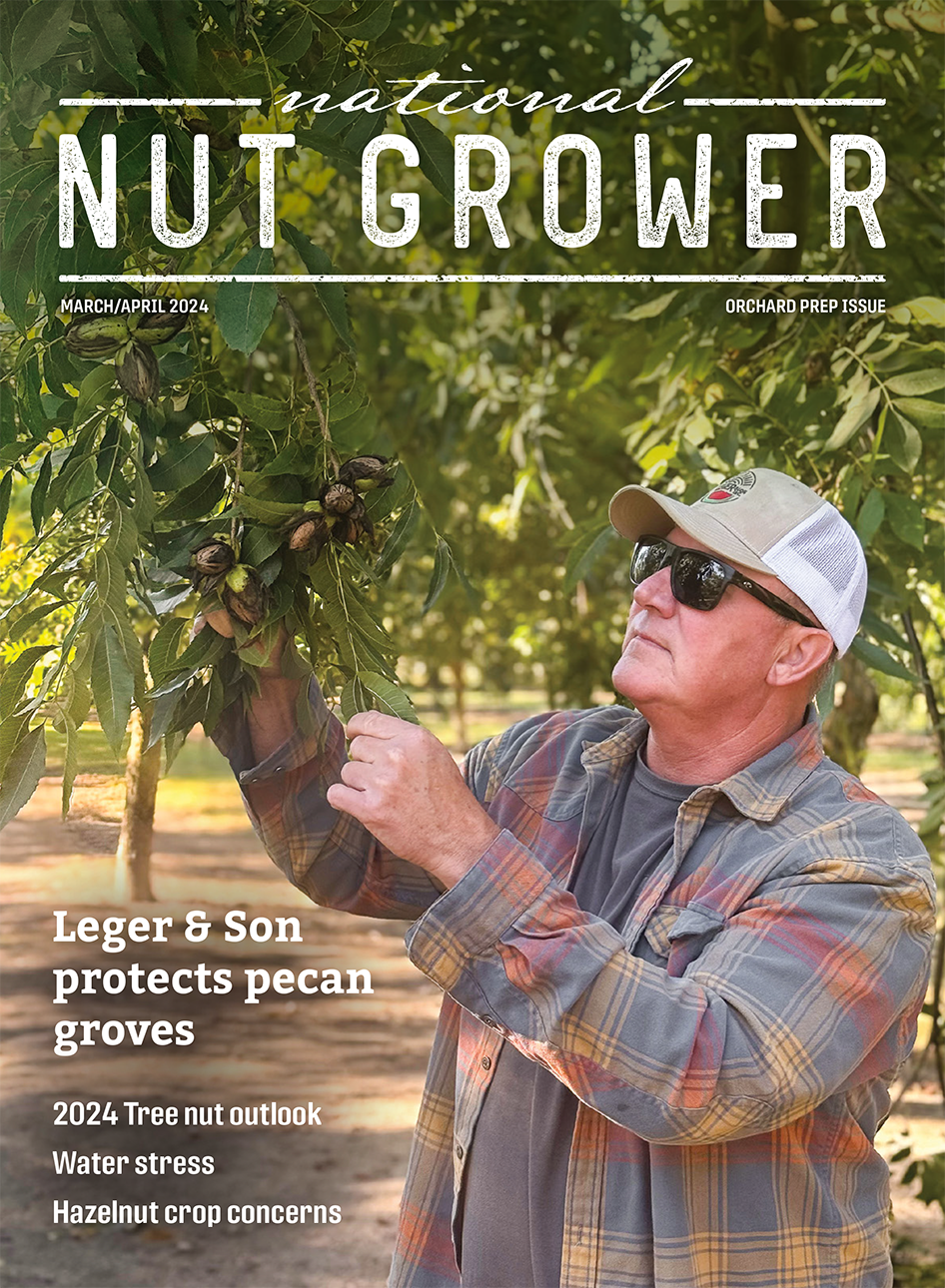
Hazelnut crop concerns
A recent interview with Nik Wiman, associate professor and orchard specialist at Oregon State University (OSU), sheds light on a pressing concern for hazelnut growers: the emergence of a new strain of Eastern filbert blight (EFB). Wiman delved into the discovery and implications of this worrisome development with National Nut Grower.
Based on observational and experimental evidence that had been collected up to that point by Wiman and other researchers, the decision was made in the winter of 2023-2024 to announce that there was likely a new strain of EFB already established in the northern Willamette Valley capable of overcoming the resistance gene. Wiman explained that while EFB has long been a concern in resistant hazelnut varieties, the severity of symptoms and rapid spread of the disease within a specific orchard had raised alarms.
Genetic testing confirmed that the affected trees were indeed resistant varieties, and OSU plant pathology researchers confirmed the EFB from the orchard of concern did indeed cause severe infections on different resistant hazelnut varieties in controlled experiments.

Impacts
Hazelnut production primarily thrives in the Pacific Northwest, with the Willamette Valley in Oregon serving as a hub for the industry and it accounts for 99% of all U.S. hazelnut crops. While efforts to establish hazelnut crops in other regions are underway, such as the Mid-Atlantic, the prevalence of EFB presents significant challenges. Wiman emphasized the importance of proactive scouting for signs of infection, especially in regions where hazelnut production is nascent.
“Today, we produce around 99% of the US hazelnut crop in the Willamette Valley in Oregon. There is a small amount of commercial production in Washington state and the Fraser Valley in British Columbia. There are efforts to get industries started in other parts of the country like the Great Lakes region and Mid-Atlantic where the climate is suitable using highly resistant EFB-resistant hazelnut varieties,” he said.
The economic viability of hazelnut cultivation outside the Pacific Northwest region hinges on effective disease management strategies and the development of resilient cultivars. The disease’s endemic nature in the Pacific Northwest, coupled with the vulnerability of susceptible varieties to strains prevalent in other regions, accentuates the need for vigilant control measures.
“Our commercial varieties will die if planted in the Mid-Atlantic and are not sprayed with fungicides for EFB because there are other strains of EFB present there that overcome the resistance gene that is in nearly all of the OSU resistant hazelnut varieties,” Wiman said. “That is why we maintain vigilance against another potential introduction of EFB from the East and our state Dept of Ag has a control order against importation of any hazelnut material from the East.”
Symptoms
“There is a 15-month latency period from the time a tree is infected and when the symptoms can first be noticed,” he said. “This makes it a very difficult disease to manage. By the time an infection is noticed, there is a high chance there is much more infection that is not yet showing symptoms.”
The first symptoms appear in the mid- to late-summer one year after infection of young shoots in spring, as the fungal infections in the branches expand and kill plant tissues, Wiman explained.
He noted that this causes “flagging,” where the leaves of the infected shoot die and turn brown, which is easy to see when scouting otherwise green tree canopies.
“Later in the fall and winter after leaf drop, the dead leaves from infected shoots or strikes may still cling to the tree,” he said. “The time to really scout for infections is winter when it is easier to see the symptoms of the disease on the bark. Infected areas will show rows of stroma, which are bumps that erupt through the bark and produce the spores during periods of rainfall.”
Wiman said in the past, when new resistant hazelnut varieties became infected with the legacy strain of EFB, “the stroma would rarely form or would be incompletely formed, and cankers from the disease were small.”
Typically, the tree wound response would appear around cankers with evident callus tissue and the symptoms would lessen over time as the resistance mechanism would defeat the disease.
“Sometimes, if the main trunk became infected, the tree would not improve and would need to be removed. However, there was no spread of the disease from the resistant varieties,” he said.
Wiman noted that the major difference with the symptoms from the potentially new strain in the resistant varieties is that the stroma or pustules are fully developed, and “they fully erupt through the bark, indicating active sporulation and there is active spread of the disease from resistant varieties. The cankers are long, and the disease will actively kill the tree. Essentially, these are the symptoms of EFB on a susceptible variety, but many of the newer hazelnut growers may not be familiar.”
He underscored the severity of the new strain, noting its ability to cause symptoms as severe as strains from the mid-Atlantic region. Moreover, the spread of the disease to well-managed orchards downwind from the epicenter highlighted the urgency of the situation. Despite ongoing research, the genetic characterization of the new strain remains elusive, leaving growers grappling with uncertainty.
Disease management
Wiman advised growers to adopt a proactive approach to scouting and recommended consulting resources provided by OSU for comprehensive management strategies.
Effective management of EFB involves a combination of winter pruning and spring fungicide applications. While chemical treatments have proven efficacy, biological alternatives have yielded inconsistent results in trials. Wiman underscored the importance of adhering to a comprehensive fungicide program to mitigate the spread of the disease effectively.
With more than 40 years of research, OSU understands how to manage this disease successfully. But for growers, Wiman said there is, unfortunately, an increased cost to managing EFB.
Resources such as the Hazelnut Pest Management Guide and the Eastern Filbert Blight Help Page maintained by OSU are available to growers. Wiman noted that these resources have a lot of information on management supported by research.
“We have no reason to believe that a potentially new strain would not be manageable using our standard EFB fungicide program. A lot of growers have asked about that. Unfortunately, biological treatments have not provided consistent results in disease management trials but copper sprays do work as fungicides against the disease so organic growers have at least one viable option,” he said. “Note that single applications during the spring infection period typically do not provide complete control, so the full program, which can be four or more sprays depending on the weather is recommended.”
Collaborative call to action
In the face of the evolving threat posed by the new strain of EFB, collaboration and information sharing are paramount. Growers are encouraged to report suspected infections promptly to facilitate research and containment efforts. Wiman and his colleagues at OSU are actively soliciting reports of infections on resistant varieties to gain insights into the behavior and spread of the new strain.
The emergence of this new strain of EFB presents a formidable challenge to hazelnut growers. With the stakes high and uncertainties looming, collaboration between researchers, growers and industry stakeholders is essential, and will undoubtedly play a pivotal role in shaping the industry’s response to this emerging threat.
Growers can share information by emailing Nik Wiman or Jay Pscheidt, Extension plant pathologist.







